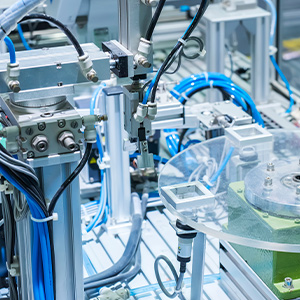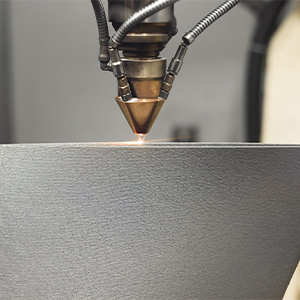What Causes Lights To Flicker?
Post By: Ryan King On: 02-02-2021
There aren't many things that are more annoying than flickering lights, but this is usually a simple problem that can be fixed quickly. How you do it depends on identifying the root of the problem – what causes your lights to flicker? Ghosts and supernatural interference aside, there are several reasons why lights can flicker, and they're generally not complicated.
The root cause is an alteration in the electrical supply. Any fluctuation or reduction in your household voltage can cause a momentary dimming or interruption of the light source. Apart from huge power surges such as lightning, common issues with electrical connections are usually due to loose wiring or a bad connection of some sort.

1. Loose Bulbs
This may appear an overly simple answer to what causes lights to flicker, but it's an obvious first step to take. If the light bulb isn't properly screwed into the socket, or is otherwise incompletely attached, there will be a poor electrical connection between the bulb and its contacts. The light will flicker due to the intermittent connection, but you can solve this problem simply by tightening up the bulb in the socket.
In the case of a flickering fluorescent tube, there are metal pins on each end of the tube that form the connection with the mountings. You may be able to improve the contacts by rotating the tube to make sure the pins are properly located, so as to make a good contact.
In the case of older light fixtures or lamps, it's possible that the sockets themselves get worn out. When that happens, the bulb is no longer able to make sufficient contact with the corresponding metal tabs situated in the bottom of the socket. In this instance, the socket or even the whole light fixture will have to be replaced.
2. Faulty Switches Or Plugs
Another fairly basic problem relates to lamps and free-standing lights. You'll often find that the on-off switch on a lamp has a bad connection, which is likely to cause flickering. Try wiggling the on-off switch, or the wires on either side if it's an in-line cord switch. If the light dims or flickers when you do that, it probably means you have a faulty switch.
This will generally mean buying a new switch or lamp socket and rewiring it, but if you're in any doubt about fiddling with electric wiring, get an electrician or qualified person to help you. The same applies to the plug on the end of the lamp cord, which may also have a bad electrical connection. Check the plug to make sure it's not damaged and that there are no loose or frayed wires. Make sure also that it still fits snugly in the electrical outlet socket. If you find anything loose or damaged in the connection, you'll probably have to replace and rewire the plug, and maybe even the whole cord.
3. Bulb Type
What causes lights to flicker can relate to the type of bulb you're using. LED lights and incandescent light bulbs are less prone to flickering than fluorescents. Flickering fluorescents may be caused by the age and wearing out of tubes or bulbs, the duration of the warming-up cycle, and extremes of temperature.
Occasional flickering and long warm-up shouldn't be a great concern, but if your fluorescents are dimming or flickering constantly, you'll have to replace the tube or bulb. If it continues to dim or flicker even with a replacement, then it's likely that you have a bad ballast in the light fixture. A ballast is an electrical device such as a capacitor or inductor, which limits the amount of current passing through an electrical circuit.
When a ballast is used in a fluorescent light, it limits the amount of current passing through the tube. If it didn't do this, too much power would be drawn into the circuit, and fluorescent light fixtures would rapidly overheat and almost instantly burn out. Although it's possible to replace the ballast, the simpler solution is usually to replace the whole fixture.
4. Insufficient Current
If too much current is being drawn on an electrical circuit your lights may go dim, but they're not really flickering. This can happen in older properties where domestic circuits are not designed to handle the kind of large loads we expect today. You might notice that your lights dim when you plug in or turn on appliances like electrical heaters or toasters, or when your fridge starts up. What's happening is that there's not enough current to service both the appliances and the lights, so the circuit gets overloaded.
The root cause of this is old-fashioned wiring that isn't capable of running high-demand appliances on the same electrical circuit as lighting. More up-to-date electrical codes specify that such appliances must have their own dedicated electrical circuit, rather than a general circuit for everything. If you're running lots of appliances, you might have to get an electrician to install additional separate circuits to carry the load.
Another alternative is to replace any high wattage incandescent light bulbs with lower wattage LED bulbs. These will provide you with the same level of illumination, but draw much less power. If you have an alternative electrical source where you can plug in a lamp, this might solve the problem temporarily.
5. Dated Dimmer Switches
Dimmer switches are often prone to buzzing or flickering when they're fitted with LED bulbs. Old-style dimmer switches were designed to use standard incandescent light bulbs, and modern conventional dimmers are similar. This means they don't tend to work well using LED bulbs. If you have a dimmer system that is causing your standard light bulbs to flicker, the simplest solution is to replace the bulbs with high-quality dimmable LEDs. If that doesn't work, invest in a new dimmer designed and optimised for LED bulbs.
6. If There's A Serious Problem
What causes lights to flicker is usually simple and solvable, but occasionally it's a sign of a more serious underlying problem. This might be dangerously faulty connections or overloaded circuits, which are both serious safety concerns. If your light flickering is severe or constant, you should consult an electrician.
Get More From Rowse Straight To Your Inbox




